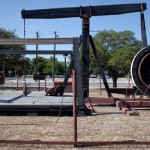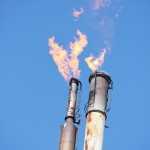StateImpact and NPR’s Poisoned Places: A Special Investigative Report
Today NPR, the Center for Public Integrity (CPI) and StateImpact launch a special series examining how air pollution is affecting communities across the nation called Poisoned Places: Toxic Air, Neglected Communities. It has been twenty-one years since Congress amended the Clean Air Act to deal with toxic air, directing the Environmental Protection Agency to enforce regulations and protect the general public from toxic emissions. But as the investigative series discovered, companies are still producing toxic air, and regulators are having a difficult time stopping them. The team found:
- State and federal regulators take months and sometimes years to enforce anti-pollution rules. About 400 facilities are on an internal EPA watch list that includes serious or chronic Clean Air Act violators that have not been subject to timely enforcement. The list was obtained by the Center and NPR and is being made public for the first time.
- More than 1,600 facilities around the country are classified by the EPA as “high priority violators” of the Clear Air Act sites in need of urgent action by enforcers.
- Regulators largely rely on an honor system easily manipulated by polluters, which report their own emissions. Even judging by the self-reported numbers, the scale of pollution is enormous: At least 600 million pounds of toxic chemicals – including arsenic, benzene, formaldehyde and lead – were released into the air in 2009, according to EPA data.
This morning’s NPR story looks in-depth at the startling numbers. Of the more than 1,600 facilities the Agency has classified as “high priority violators,” there are many repeat offenders:
“Yet nearly 300 of those facilities have been considered “high priority violators” of the Clean Air Act by the Environmental Protection Agency for at least a decade. About a quarter of those 1,600 violators are on an internal EPA “watch list,” which the agency has kept secret until now.”
And the Center for Public Integrity reports on the individuals and communities affected by these toxic emissions across the country, including the primarily Latino neighborhood of Manchester in Houston:
“Manchester lies in the bull’s eye of benzene emissions from the nation’s biggest petrochemical complex. Doctors diagnosed Valentin Marroquin with acute lymphocytic leukemia eight years ago, at age 6. While linking illness to toxic exposure can be difficult, Valentin’s mother, Rosario, doubts he got sick by chance. The ailment has been associated with benzene, and researchers have found elevated rates of childhood leukemia in Houston neighborhoods – including Manchester – with high levels of the chemical in the air. Refineries near Manchester have reported emitting hundreds of thousands of pounds of benzene over the last decade.”
NPR and CPI took data from the EPA and created an interactive map of facilities that reported chemical emissions into the air. You can see where they are located in Texas, and learn about how this issue affects your community, by clicking on the map below:
This week we’ll be reporting on some of the toxic air emitters in Texas, the state of regulation here, and how these companies practices affect the health and well-being of communities in the state.
Note: A previous version of this post inaccurately described the map, which shows facilities reporting chemical emissions into the air — not those on the federal watch list or those identified as violating regulations.



